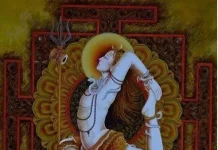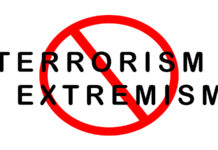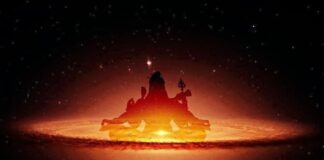Remember what happened in a small part of India for over seven decades to those who wanted to advocate a united India? Perhaps, it was never that important for many, for it became a distant memory. But, for those who were always in the midst of it, the memories of the past came rushing back as the Indian tricolour was hoisted at Lal Chowk in Srinagar with freedom and gusto.
By Rohit Pathania
As the 75th year of India’s independence from colonial slavery is being marked by the amrit mahotsav, one may want to ponder another form of slavery that was witnessed for 70 years in Jammu and Kashmir.
That slavery, of the nationalist spirit of the people of Jammu under the neo-fascist regimes propagated in the erstwhile state of Jammu and Kashmir, has perhaps best been surmised by the varying emotions and struggles that surrounded the tiranga, the tricolour, that marked India for the world.
It all started with Sheikh Abdullah and his dictatorial, Islamist dreams that forced a separate vidhan, separate pradhan, and separate nishan, or flag, on the people of Jammu and Kashmir.
The people of Jammu stood up at the time and opposed it tooth and nail.
The memories of the Jammu Praja Parishad stand faded today, having been silenced, muted, and then whitewashed as a Hindu reactionary movement.
Heartbreaking it is, indeed, to listen to this description, for so many died just to oppose this ghastly idea of a country within a country when an overwhelming majority did not dream it in any way possible.
Opposing this idea of a separate flag and refusing to recognise it, students were beaten up in Jammu in 1952 at the orders of Sheikh Abdullah, who deemed himself to be a demigod and sought to impose his will, including his own party’s Naya Kashmir flag, on everyone.
For that very idea of ek nishan, Dr Syama Prasad Mookerjee ended up sacrificing his life, only to be sidelined as a Hindu neo-Nazi.
For that very idea, people like Pandit Prem Nath Dogra sacrificed their lives in their twilights.
For that very idea, Sheikh Abdullah taunted the people of Jammu wanting a ‘Hindu raj’.
Because they stood for one India.
Did it change anything? No. Raising the flag was always an invitation for a crackdown.
Remember when terrorists threatened anyone who would dare to raise the tricolour in Jammu and Kashmir?
It took a Murli Manohar Joshi and a certain Narendra Modi to go and do the impossible, albeit under heavy security. This was 1991, and on 26 January, India’s Republic Day, this dangerous task was accomplished at a place called Lal Chowk, inspired by the Communist-influenced Naya Kashmir movement of Sheikh Abdullah, who had absorbed the red into the green.
Was it any easy after that, though? No.
Remember the case of the Amarnath agitations, where the tricolour was shown as a sign of ‘fascist Hindutvavadis’ by sections of the media?
They chose to ignore how the agitation saw small children with their mothers and grandmothers coming out on to the roads with the tricolour in their hands and demanding that the land be given back to the Shri Amarnath Shrine Board.
Breaking party lines, the tricolour fluttered high in Jammu as surging crowds trooped out on 18 August 2008, breaking barricades, shouting slogans, and courting arrest. The calm that prevailed till mid-morning was suddenly shattered when crowds from narrow lanes and by-lanes sprung out, surprising the security forces and the media.
The zoom and pan of the cameras fell far short of the marching men, women, and children. More than three lakh people had come to take part in the jail bharo andolan, from Lakhanpur to Banihal, cutting across communities.
Yet the liberal, mainstream media could only see a communal angle, ignoring the angst of the nationalist voice that had dared to stand up that time.
But do you forget also how, in 2011, Sushma Swaraj, Arun Jaitley, Anurag Thakur, and many others were arrested in Lakhanpur for entering Jammu and Kashmir to conclude the Ekta Yatra?
The Yatra was to culminate at Lal Chowk in Srinagar with the unfurling of the national flag on Republic Day, but Omar Abdullah as the Chief Minister of the time had other plans. This prompted Jaitley to caustically remark that anti-nationals could come to New Delhi and talk against India, but Indians could not go to Srinagar to unfurl the tricolour.
Time and again we have seen how the tricolour was a problem for elements of neo-Nazism in Kashmir.
When, in 2015, Justice Hasnain Masoodi of the Jammu and Kashmir High Court ‘directed’ all constitutional authorities to hoist the state flag on their vehicles and buildings and questioned the Sixth Amendment, all Kashmir parties rallied together to welcome the judgement and sought the implementation of the order.
The travesty was such that the following rather factually incorrect and grossly biased observation was given out:
State of Jammu and Kashmir is only State in the Union that has its own Flag adopted by its Constituent Assembly, and provided in its Constitution. The State Flag is one of the attributes of Constitutional autonomy or limited or residual sovereignty by whatever name we call it, enjoyed by the State of Jammu and Kashmir.
And so, it became the norm to see both the tricolour and the ‘state flag’ together in Jammu and Kashmir, a travesty of the highest order portrayed.
The tragedy and its dimensions became evident when, in 2016, outstation students of the National Institute of Technology, Srinagar, were seized and the tricolour snatched from them inside the campus for countering the anti-India slogans following a T20 match, with the police also beating those students and tear-gassing them for taking out a rally.
But, also, does anyone remember how a teenager named Tazneem Merani of Gujarat was stopped twice from even exiting the airport in Jammu Kashmir for a simple desire — unfurling the tricolour in Srinagar to answer the tukde tukde gang?
Does anyone today remember these moments, and all that it has taken in terms of sacrifice for just carrying the tricolour with pride in Jammu and Kashmir?
In 2018, once again the ground zero was Lal Chowk. A group of people tried hoisting the tricolour, only to be roughed up by ‘locals’.
The ‘non-locals’ group had assembled at the clock tower and were stopped by locals who objected to the hoisting of the flag. As an argument ensued, the non-locals were roughed up before the police intervened and took them away.
The ability to unfurl the flag today has come at a great cost to the nationalists inside Jammu and Kashmir. A lot was lost, but certainly not the desire to see the tricolour fly high.
Independence for India came in 1947, but for Jammu and Kashmir, the independence and right to proudly host the tricolour came only after 2019.
The move to amend Article 370 for ending the special status was a tribute to those nationalists who dared to dream that this nation would have ek vidhan, ek nishan, and ek pradhan, fulfilling the dreams of millions of Indians and countless residents of Jammu Kashmir of being proud Indians.
May this status never change
This article first appeared in www.swarajyamag.com and it belongs to them.












